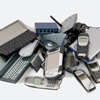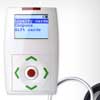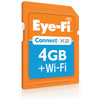Every once in a while I look around and am shocked by how much junk I’ve allowed to pile up. It’s not just the physical junk, like my outdated digital cameras. It’s also all of the digital stuff that I just haven’t gotten around to organizing.
So, I’m off on a digital spring cleaning binge to try and get my life back in order. Want to take on your digital mess? Here are some tips:
Scan your documents for storage
Get rid of all those paper receipts and other documents by investing in a scanner. One of my favorites it the NeatDesk ($399.99 on Amazon), which not only scans receipts and business cards, but also extracts the key information and saves it to a file on your computer for use later.
Delete old computer files
Get rid of all of those old programs and associated files. If any file contains personal data, you’ll want to digitally shred it. When you delete a file, the file name is removed from the list of available files and the computer knows it can use that space to save new data.
The old file data is still there, though, until it is overwritten. And the data can be retrieved with a data recovery program. To remove data from your hard drive permanently, it needs to be wiped clean—preferably overwritten multiple times with a dedicated hard-drive wiping program. For Windows PCs, try Eraser (free on eraser.heidi.ie) or EgisTec Shredder ($9.95 on EgisTec.com, supports Windows 7) and for Macs, try ShredIt X (free on Apple.com).
Sell or recycle your old, unused electronics
 Your old electronics items may be worth more than you think, so check out trade-in sites like BuyMyTronics.com, Gazelle.com and CExchange.com. If it turns out that your item is worthless, consult EcoSquid to find your best recycling option.
Your old electronics items may be worth more than you think, so check out trade-in sites like BuyMyTronics.com, Gazelle.com and CExchange.com. If it turns out that your item is worthless, consult EcoSquid to find your best recycling option.
Move loyalty cards to your smart phone
 The grocery store, drugstore, baby store, coffee shop, sporting goods store— it seems like anywhere you shop you can pick up a loyalty card that pays back in some way. Instead of lugging them all around in your wallet or on your keychain, digitize them. If you have a smart phone, try the CardStar app (Free, Android Market, BlackBerry App World, iTunes). Otherwise the Mobeam numi key ($19.95), a key fob device that stores up to 50 membership numbers, is a good option.
The grocery store, drugstore, baby store, coffee shop, sporting goods store— it seems like anywhere you shop you can pick up a loyalty card that pays back in some way. Instead of lugging them all around in your wallet or on your keychain, digitize them. If you have a smart phone, try the CardStar app (Free, Android Market, BlackBerry App World, iTunes). Otherwise the Mobeam numi key ($19.95), a key fob device that stores up to 50 membership numbers, is a good option.
Organize your digital photos
Whether you use Google’s Picasa, Microsoft’s Windows Live Photo Gallery or Apple’s iPhoto (all free), tag your photos with keywords. These programs let you apply a keyword as you import your photos. So a batch could be tagged with “Christmas 2010” or “Zach’s 5th Birthday Party.” The software can also apply “people tags” by using facial recognition to find faces in photos and guess who the people are — an incredible time saver. No need to manually tag every person in all your photos, and searching your archive to find someone’s photo is now a snap.
Transfer photos and videos off your camera
 If your find that your photos and videos get stuck on your camera, automate the process of getting them off. An Eye-Fi memory card (4GB Connect X2, $39.99 on Amazon) will automatically connect to your home’s Wi-Fi network and send your pictures to your computer and/or to the photo and video sharing sites of your choice, including Flickr, Facebook, MobileMe and YouTube.
If your find that your photos and videos get stuck on your camera, automate the process of getting them off. An Eye-Fi memory card (4GB Connect X2, $39.99 on Amazon) will automatically connect to your home’s Wi-Fi network and send your pictures to your computer and/or to the photo and video sharing sites of your choice, including Flickr, Facebook, MobileMe and YouTube.
Label your cords—at both ends
Besides looking awful, a tangle of wires is impossible to sort through if you ever need to replace a component in a home theater system or grab the power cable for your laptop for a trip. Sorting through all those cords and labeling each one at the plug and near the device it's connected to is a simple and permanent solution. A label maker is ideal, but masking tape and a Sharpie will do.















From Sean Dougherty on March 09, 2011 :: 10:18 am
and don’t forget to standardize your file-naming conventions.
Reply